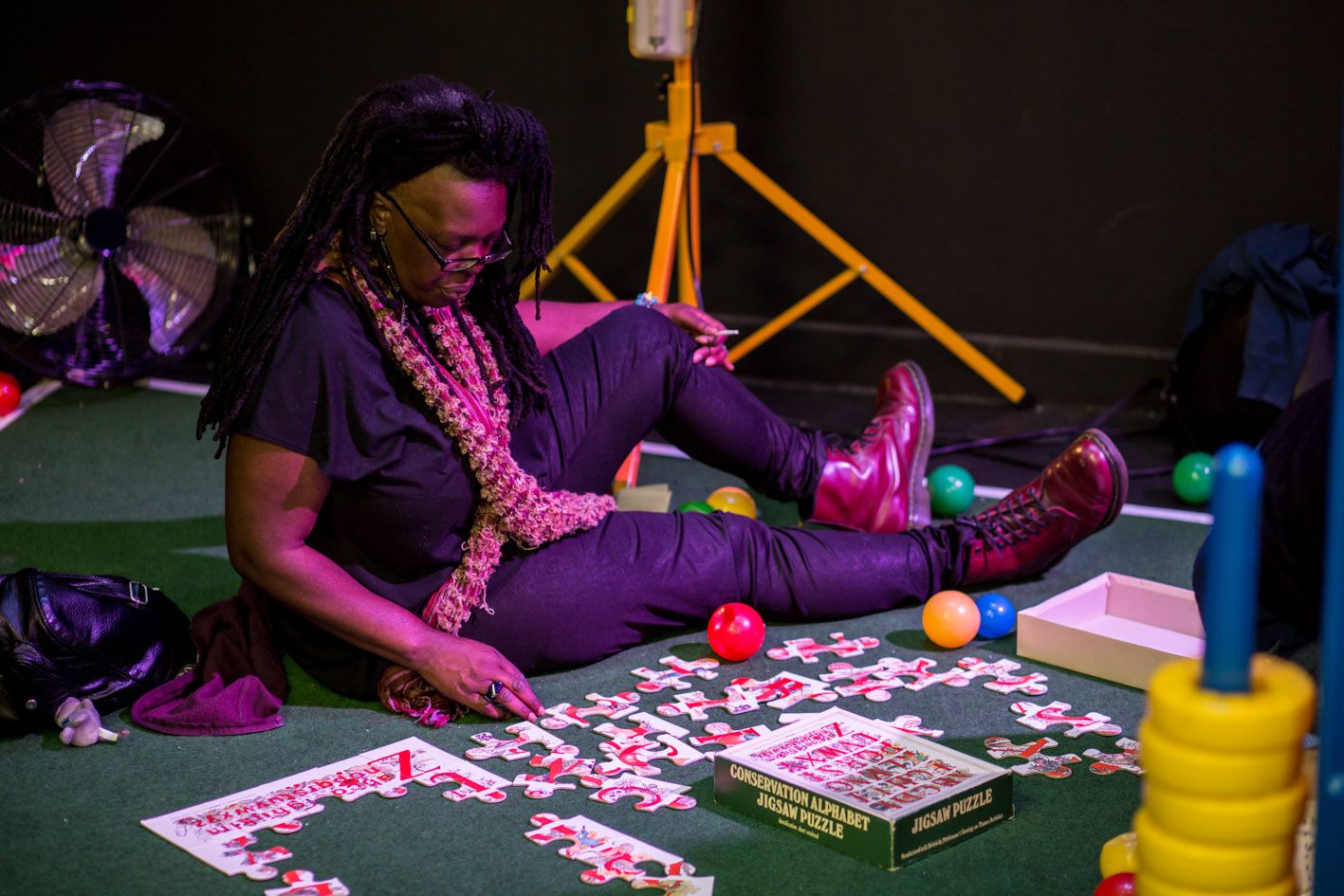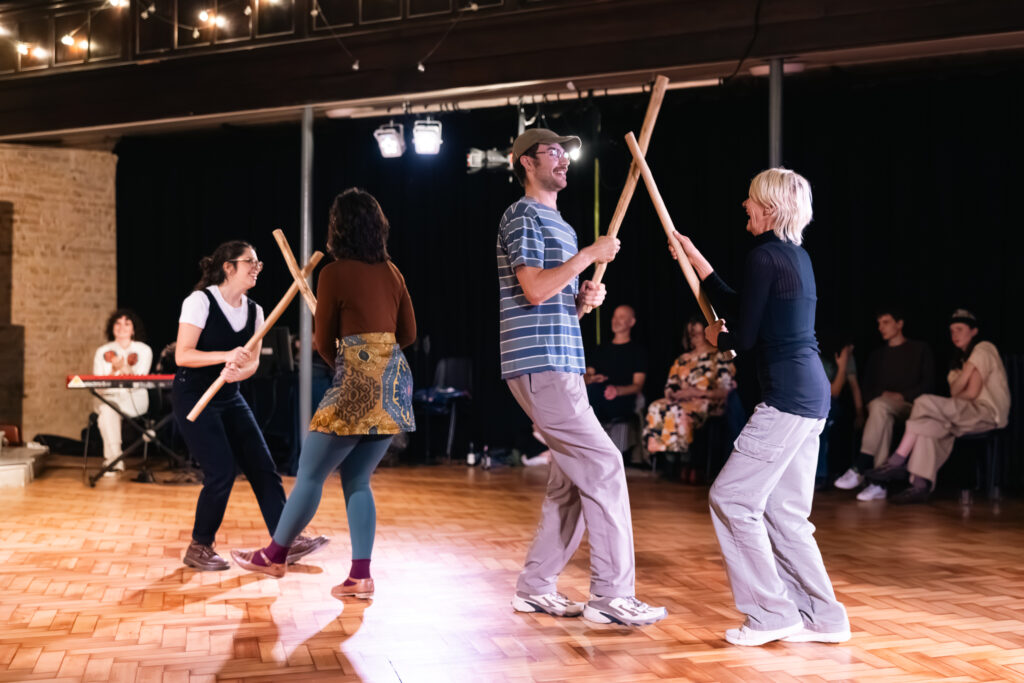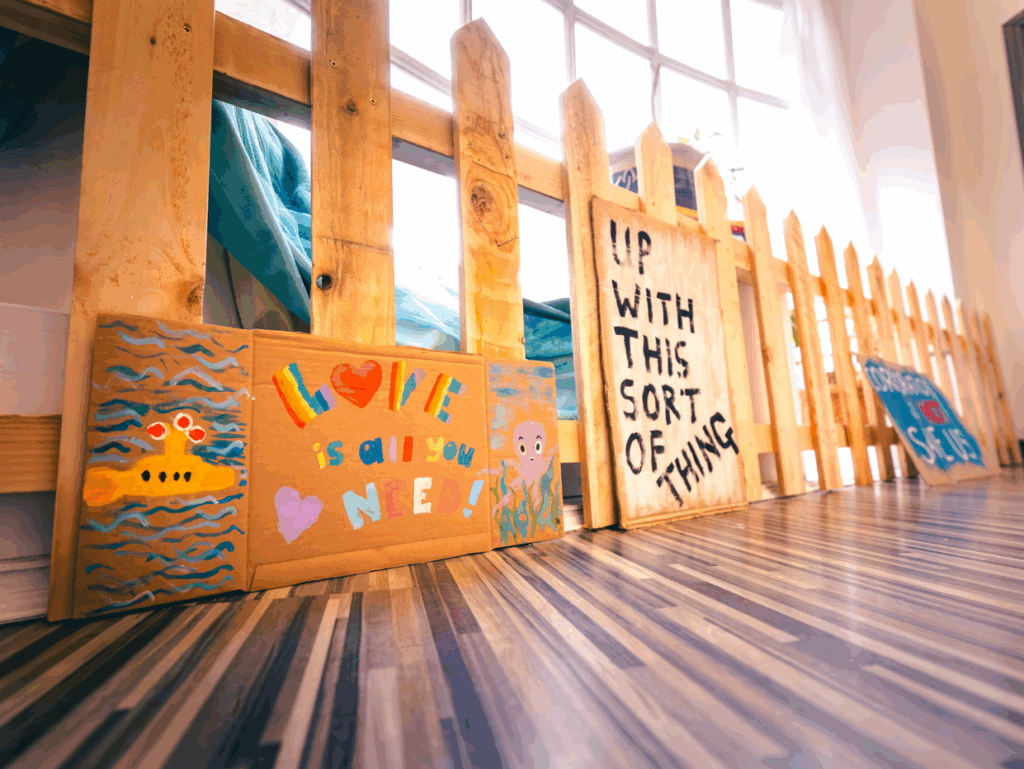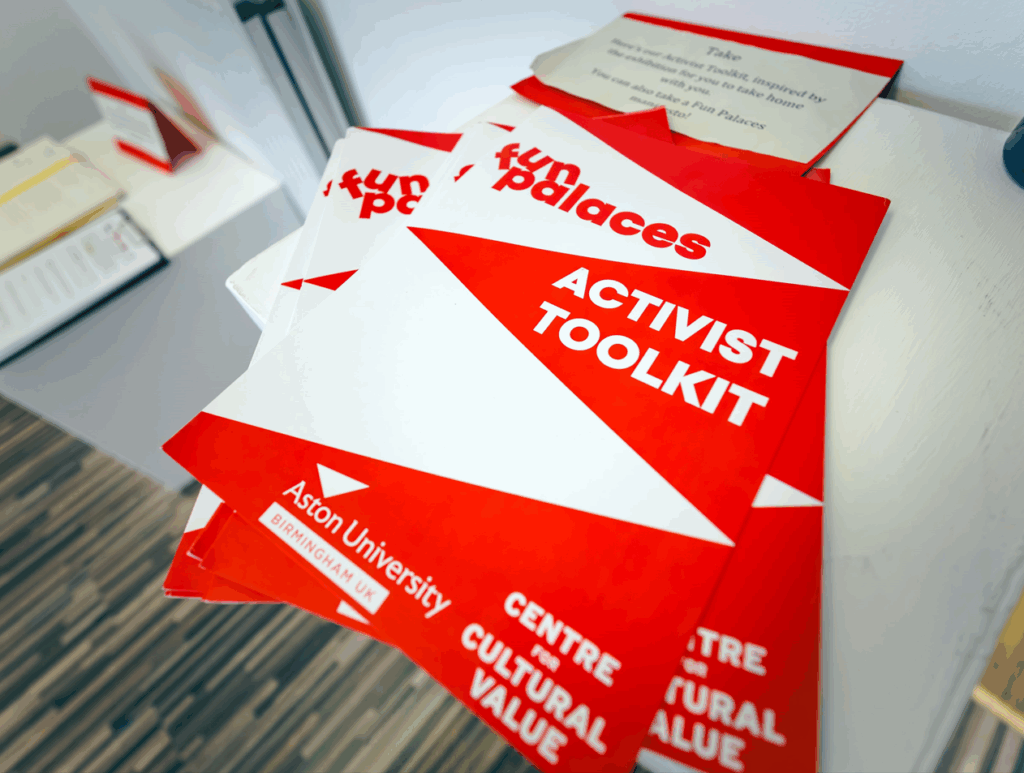What the Fun Palaces Impact Report Shows and CCV’s Vitality Lens Sees

Anyone can say “let’s put communities in the driving seat”… It’s a lot harder to do it and even harder to prove that it works (especially in a funding climate that still often favours prestige over participation). Yet Fun Palace Makers have done just that.
Over ten years, Fun Palaces has evolved from a bold idea to a quietly radical national (and international) network, powered by local people in their own communities, not driven by “arts leaders” or a handful of decision-makers at the top.
There have been 2,800+ Fun Palaces in every type of place you can imagine, from care homes, council estates, radio stations and rural towns to sports centres, local libraries, community gardens and even on a Minecraft server and more.
But what really matters isn’t the number of events. It’s the way Fun Palaces reframes communities as having power – they have the power to decide what they want to do themselves. Instead of a handful of “creatives” designing a spectacle for a passive crowd; people shape, share and reinvent culture on their own terms. The data, the stories, the thousands of joyful shared photos and videos and the lived experience of Makers all point the same way: put real power into people’s hands and you get cultural vitality that is resilient, diverse, creative and impossible to fake.
Do you want a physical copy of the Fun Palaces Impact Report 2025?
Please complete this form and we will send one over to you (free for respondents living in the UK, including Northern Ireland)
And we’re not content to talk about community without the people who make it. We fund Makers to be in the room at sector gatherings across the country, such as Locality, Stronger Things and more. Too often, ”communities” are discussed without the people they are discussing being represented. It’s a small intervention that changes the temperature, and the conversation moves from outreach to people towards decisions with people who already do the work.
Earlier this year, we added ‘Tiny Fun Palaces’ to the map and Makers can now join October’s Weekend of Celebration without sharing their exact location. The truth is that to be visible in your community is a privilege and is much less safe for some people than others, Tiny Fun Palaces make space for that. They are also ideal for chronically ill or disabled Makers who find it harder to leave home, and anyone running something small with their neighbours. Along with the option to create digital online Fun Palaces, it lets people lead culture on their own terms.
About Fun Palaces
Fun Palaces is a grassroots movement for community-led culture: recognising the extraordinary in the people making culture happen where they live. Each year, our Makers organise free local events that invite everyone to try something new, meet others, and share what they know, in their communities.
Everyday Culture, Measured: What CCV’s Vitality Lens Sees (and Fun Palaces proves)
If you want cultural vitality, start where people already are. The Centre for Cultural Value’s recently published indicator suite says as much; and our 10-year impact report shows what it looks like in practice: with 2800+ Fun Palaces, almost 50,000 local community Makers, and close to 900,000 participants since 2014.
There is real energy in the CCV’s call for measuring culture from the ground up; their recent report brings much-needed clarity to the question of what makes culture thrive and their findings resonate deeply with what Fun Palace Makers experience every year. We believe real cultural vitality comes from the bottom up, not the top down and our newly published 10 year Impact Report lands at just the right moment, backing up what has been visible to us on the ground all along. If you want resilient and thriving communities, it’s not enough to count ticket sales or cut the ribbon on another big, shiny building by a major institution. The real test is everyday participation and lived experience, which is exactly what you’ll find in thousands of communities across the UK and everywhere grassroots networks like Fun Palaces are getting on with the job.
But let’s not look away from the uncomfortable backdrop. Since 2010, core government funding for the Department for Culture, Media and Sport (DCMS) in England has fallen by around 25% in real terms. Meanwhile, councils (still the biggest public funder of local culture) have seen their spend on cultural services in England fall by around 43% in real terms since 2010-11 (libraries, museums, arts, heritage, parks, etc… that’s the hole that communities feel first).
The recent Spending Review this year (2025) has further tightened the screws, slashing DCMS arts funding by another 1.4% in real terms, while other departments managed to scrape a modest increase.
Looking at the rest of the UK, you see the same slow bleed. Creative Scotland’s Grant-in-Aid is cash-standstill since a reversed 10% cut (Feb 2023), creating a real-terms squeeze; Screen Scotland -22% in-year cut (2022/23) and a heavily oversubscribed Multi-Year Fund underline the pressure, with many strong applicants going unfunded.
In Northern Ireland, the Arts Council NI says government investment in the arts here is the lowest in the UK (£5.07 per head in 2023/24) following a 5% baseline cut, warning of serious impacts on access.
In Wales, The Senedd’s A decade of cuts report (Jan 2025) shows Arts Council of Wales revenue funding reduced ~29% in real terms over the decade to 2024–25.
The last decade has been defined by shrinking national investment and brutal local authority cuts, with a sense that smaller, community-based organisations have been left scrambling for scraps.
So, with public money stretched to the bone and cultural policy still fixated on prestige and profile, it’s more urgent than ever to make the case for grassroots culture, created by, and for, local communities. Because if we don’t, we risk losing the living culture that gives our places meaning.
So, what does genuine community-led culture actually look like? And where can policy-makers or funders find evidence that this approach is practical and measurable, and not just idealistic? The answer, frankly, is hiding in plain sight.
Seven dimensions of cultural vitality
The CCV’s report sets out seven key dimensions or indicators of cultural vitality and calls for joined-up, practical ways to measure what really matters. Our 10 Year-Impact Report shows what those dimensions look like in real life, with case study evidence and crucially the voices of our Makers and their communities.
1. Cultural Participation and Engagement
Measuring genuine participation (who creates and who feels they belong) must go beyond ticket sales and formal metrics. CCV pushes us to count the culture people do, not just the culture they watch.
What our data shows
- Since 2014 there have been 2,809 Fun Palaces, made by 49,823 Makers and attended by 881,824 people. These are free, locally led and hands-on by design.
- In 2023, 98% of Makers agreed their Fun Palace created a stronger community spirit.
- 70% of Makers (2022–2025) worked alongside people they didn’t know beforehand to help make their Fun Palace (participation as relationship-building, rather than just footfall).
The median Maker team size is 12 (since 2015), showing how small groups sustain big participation ripples.
Maker voices
“It’s events like Fun Palaces that make it a community because everybody has that opportunity to join in, to play, to work together, to make suggestions, to be considered equal.” Fun Palace Maker 2023
“I always tell people Fun Palaces are ‘of the people, by the people and for all people’.” Fun Palace Maker 2024

“Small teams, big ripples”
2. Cultural Infrastructure and Accessibility
Culture happening everywhere, not just in elite or city-centre venues. CCV frames infrastructure as where culture actually happens and how easy it is to reach, not just big city-centre venues but spaces on people’s doorsteps; it notes the rise of hyperlocal and embedded activities (“culture on my doorstep”).
What our data shows
- Since 2014, Fun Palaces have happened in all four UK nations (England, Scotland, Wales, NI) plus internationally (including Canada, Norway, Athens, Seoul & Australia) and online. Libraries host 47.4% of the events; activity is also spread across community centres, museums/heritage, shopping centres and more.
- 56% of 2023 Fun Palaces took place in the most deprived third of postcodes; 35% of lead Makers also came from those areas.
- Over the last decade, Makers have used hundreds of different types of community spaces, from lidos and libraries to orchards, care homes and Minecraft servers. That mix is the point, these are low-barrier, familiar places in the community.
Maker voices
“It creates a real atmosphere, a special occasion in the town… it’s everywhere you go.” — Fun Palace Maker at Warwickshire Libraries (Stratford-upon-Avon)
“I love Fun Palaces because it is all about the community and confounding people and showing that great things can happen in our small market town.” Fun Palace Maker 2023
“I’ve met a young girl today who I’ve never spoken to before… her Grandma was my best friend at school.” Fun Palace Maker 2016

Fun Palace venues range from orchards, beaches, health centres and pubs to churches, cemeteries, canal towpaths and even a Minecraft server, proving that it’s not the venue, but what (and who) happens inside that matters.
3. Cultural Diversity and Inclusivity
CCV emphasises authentic inclusion, not just headcount (leadership, languages, access and cultural practice)
What our data shows
- Since 2016, an average 24% of Makers have been from Global Majority backgrounds; events have run in 20+ languages (Arabic to Yoruba).
- One-third of Maker teams have included someone disabled or with a long-term health condition; in 2024, 21% of teams included both under-25s and over-65s.
- In 2023: 30% of Maker teams included people of different ethnicities; 31% included under-18s; 30% included someone 65+. 29% of lead Makers identified a disability/health condition; 16% identified LGBTQ+
Maker voices
“The beauty of the Fun Palaces is that you can capture a really diverse group of people who come together for a certain period of time while it’s running and they all forget their prejudices for that time that they’re involved.” – Fun Palaces Maker.
“As non-British nationals, becoming Fun Palace Makers has meant going out and talking to our neighbours, connecting with our community and challenging their preconceptions and misconceptions. And ours.” Fun Palaces Maker

4. Creative Economy and Employment
CCV urges us to recognise more than just creative-industries GDP; looking at skills-building, micro-enterprise and freelance pathways.
What our data shows
- In 2023, 66% of Makers learned new skills; 66% reported new partnerships/resources; 71% felt more confident to get involved in community activity afterwards.
- In 2019, 54% of participants wanted to get involved next year and 32% said they had a skill to share -a visible pipeline from participant to Maker.
Maker voices
“It was a sugar craft workshop… people turned up and they were like, ‘Oh, I really like this, can we come back and continue, carry it on?’ And it’s two years later now, and it’s still happening.” — Fun Palace Ambassador in Rotherham
5. Social and Civic Engagement
CCV treats social/civic engagement as culture’s role in agency, activism and civic life (from volunteering and local organising to democratic participation).
What our data shows
- In 2023, 71% of Makers felt more confident getting involved in community activities after their Fun Palace; 66% found new partnerships/resources for the local area.
- In 2024, our work with Dr Katy Pilcher (funded by the Centre for Cultural Value) found Fun Palaces can act as a springboard for civic action. After taking part, Makers report feeling more confident to challenge local policy decisions, join community boards and take the lead on new initiatives.
Maker voices
“A few of us were inspired to challenge policies in the town.” Fun Palace Maker and Research Participant
“If you want things to change, you just have to make them change, don’t you?” Fun Palace Maker and Research Participant

6. Cultural Policy and Investment
CCV argues for embedding cultural democracy in funding, language and governance (supporting everyday culture alongside institutions).
What our data shows
The Ambassador programme shifted organisational practice in places like Rotherham, SLIC (Scotland), and the National Trust; empowering staff to move from box-ticking to actual collaboration (FP Impact Report, p. 16–18).
Maker voices
“It has become something that just is part of the makeup now of being here. So if we’re ever talking about an event, there will always be a ‘well, where do the community voices come into this?’, ‘how are we engaging with the community?’” – Trinity Community Arts Centre, Bristol

7. Wellbeing and Quality of Life
CCV flags mental health, belonging and pride as core outcomes to track.
What our data shows
- 90% of Makers said their Fun Palace helped people feel happier (2023); 79% felt it made the area a better place to live; 81% saw people pulling together locally.
- Over ten years, Makers and participants report confidence gains, reduced isolation, and discovering they can do something new.
Maker voices
“I’ve never felt capable of playing a music instrument before (and I’m 45 years old!) but in just an hour I realised I could” Fun Palaces Maker
“Quite often…people don’t actually realise the skills that they possess themselves…until they start thinking about sharing things.” – Fun Palace Maker
In 2023, 98% of Makers agreed that their Fun Palace created a stronger community spirit.
Much of what we’ve learned at Fun Palaces has only been possible because people were willing to share openly, sometimes critically and always with the energy of “what if we just try it our way?” Our research partnership with Dr Katy Pilcher and the Centre for Cultural Value has surfaced big questions. How does grassroots creativity actually spark activism? Why do some community networks thrive under pressure, while others fade out? Where are the hidden barriers, even in a “participatory” field?
Capturing the full messy, complex reality of community-led culture will always be a work in progress. But if you want to understand where change is really happening, or if you’re itching to test new ways of evaluating, mapping or nurturing cultural vitality then come and talk to the team at Fun Palaces.
Over the next four years, thanks to funding from The National Lottery, Fun Palaces are building a UK-wide learning network, and will continue to test and track the Cultural Vitality indicators with real communities across rural, coastal and urban contexts. In our commitment to delivering a campaign that truly is for everyone, we are also adding two new roles, a DEI & Anti-racism Consultant and an Access Consultant.
If you’re working on everyday culture, creative health, rural measures or data protocols for informal participation, talk to us about co-designing methods or pairing our Maker network with your study. We’d love to have conversations with researchers and data partners who want to genuinely help communities measure what matters to them.

Author: Orla Nicholls
Orla was a Fun Palace Maker in 2014 in her community in Luton, and now works for Fun Palaces as the Exec Producer. She currently runs The Make Shift, a community led craft collective in Luton.
